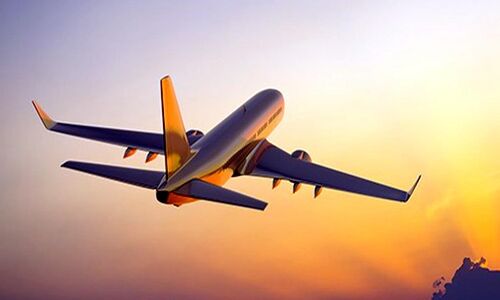Live
- World Liver Day 2024: Theme, History, and Significance
- Google Pixel 9 Rumoured AI Features: Magic Composer, Autofill Smart Reply, and More
- Malladi Vishnu complains to EC on Naidu, Ayyanna & Pawan
- MyVoice: Views of our readers 19th April 2024
- Peddireddi touched my feet for DCC post, recalls Kiran
- All politicos must commit to free press
- iPhone 17 Plus Rumors: Potential Smaller Screen Size for the 2025 iPhone
- Risk of Middle East escalation
- 50 families quit YSRCP, join TDP
- Nara Bhuvaneshwari to File Nomination Papers on Behalf of TDP Chief Chandrababu in Kuppam
Just In

Fly Net Zero is the commitment of airlines to achieve net zero carbon by 2050. Current projections estimate that demand for air passenger journeys in 2050 could exceed 10 billion. The expected 2021-2050 carbon emission on a ‘business as usual’ trajectory is 21.2 gigatons of carbon dioxide.
Fly Net Zero is the commitment of airlines to achieve net zero carbon by 2050. Current projections estimate that demand for air passenger journeys in 2050 could exceed 10 billion. The expected 2021-2050 carbon emission on a 'business as usual' trajectory is 21.2 gigatons of carbon dioxide.
Shell believes that the aviation industry can and needs to achieve net-zero emissions by 2050, but this will only be possible with a sectoral approach - where governments, business and civil society work together to achieve real and meaningful progress. This approach means airlines, engine and airplane manufacturers, airports, governments, financial community, and those who benefit from flying - supply and demand - working together.
In the future, new technologies such as electric aircraft and hydrogen-fuelled aircraft have the potential for certain applications and uses. These technologies offer the possibility of zero‐emission flying but changing to them will be much harder than switching from kerosene to sustainable aviation fuel (SAF). By starting to develop alternative propulsion technologies now, they could become viable for some applications by the late 2040s and 2050s.
"The biggest challenge to commercial aviation is the commitment that's been made to net-zero carbon emissions by 2050," the Etihad Airline's CEO Tony Douglas told the Global Aerospace Summit in the UAE capital.
The aviation industry is among the fastest-growing sources of greenhouse gases, with airlines looking at hydrogen fuelled aircraft to reduce CO2 emissions. IATA, which represents 290 airlines accounting for 83 percent of global air traffic, made its net-zero pledge in October.
The UAE, one of the world's biggest oil exporters, last year also launched a "strategic initiative" targeting carbon neutrality by 2050. "I imagine everybody in this room understands that the physics of powered flight render the achievement of that objective (net zero) extremely difficult anytime soon," Douglas said at the three-day conference.
"Our responsibility as leaders within the aerospace sector is to enable the foundations for the next generation to deliver upon what will ultimately determine who are the winners and who are the losers in commercial aviation." SAF is blended with conventional fuels. Shell and Rolls-Royce are working together on demonstrating the use of 100 per cent SAF and exploring opportunities to help progress the use of 100 per cent SAF towards certification. There are still many challenges before SAF can be deployed at the scale needed. They include the need for greater availability of raw materials, better supply infrastructure and clearer policy to encourage production. These elements have to come together – and the faster, the better.

© 2024 Hyderabad Media House Limited/The Hans India. All rights reserved. Powered by hocalwire.com







